| The photo at left below shows Emily at the first camp site. The photo at right shows a close up of David and Emily's tent. 100% mosquito netting is perfect for this climate.
David on a high point. This trip includes lots of high climbs for the views.
|
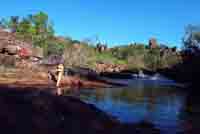 |
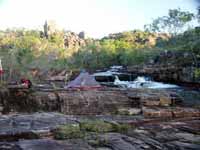 |
| The two photos below show David on a high point and Devid and Emily walking along one of the rockier parts of the creek. This trip includes lots of high climbs for the views. |
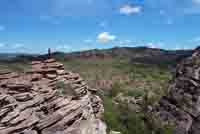 |
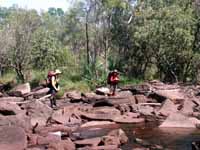 |
| The two photos below show our second camp site and one of the more rugged parts of the day walk we did from that camp. There would be no water in the small gorge in the dry season. |
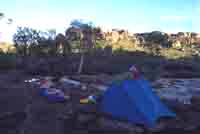 |
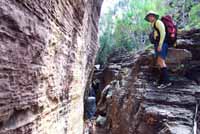 |
| Here are two photos of some of the easier terrain near the end of that same daywalk. The grass is green like this only during the wet season. |
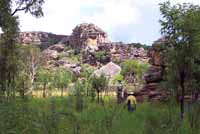 |
 |
| You can often spot rainbows on trips at this time of year. Here are two different rainbows spotted from near the same campsite. |
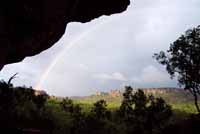 |
 |
| One of the nicest things about walking at this time of year is the wildflowers. The two photos below show David photographing wildflowers and a small water lily. Most of these will disappear later in the year. |
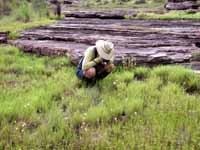 |
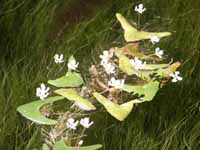 |
| The photos below show the flower of a swamp bloodwood and a lily next to some pink calytrix. All of these bloom only during the wet season. There is, however, a different calytrix with similar flowers which blooms during the Dry. |
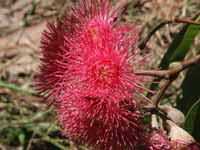 |
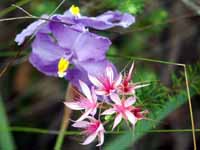 |
| Now back to the actual walking. The photos below show the terrain approaching our final campsite and the campsite itself. Late in the dry season, there would be no water at this camp. |
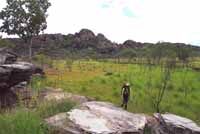 |
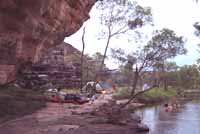 |
| The photos below show the moonrise as seen from the camp above and a view across to the Arnhem escarpment from where we dropped off the Baroalba massif. |
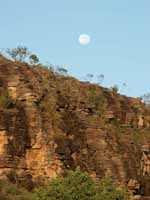 |
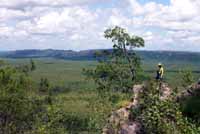 |
| From the point where the last photo above was taken, we dropped down onto the plains and walked across to a campsite on the creek which comes off the highest point on the escarpment. The pictures below show two sunset views of that camp. |
 |
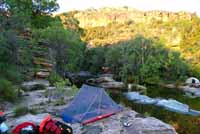 |
| Following the creek upstream, it was often easier to wade than to try and keep your feet dry. |
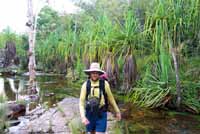 |
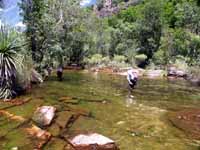 |
| At this time of year, every little waterfall and cascade is flowing well. |
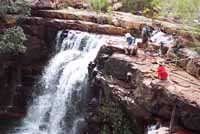 |
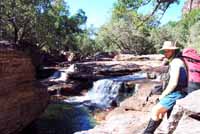 |
| You can't go bush without seeing bugs. Here are two of the more interesting ones. |
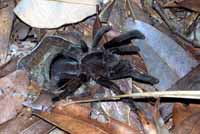 |
 |
| Near the end of the trip, we did a climb up onto Hill 420. The photo at right shows guide, Russell Willis, on the edge of the escarpment. The two photos below show some of the very rugged and rocky country we passed through nearing the top. The water here would disappear in the dry season. |
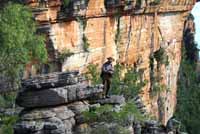 |
 |
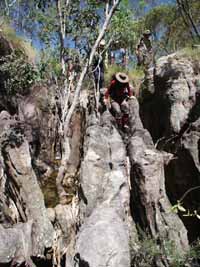 |
| The terrain back along the plains at the end of the walk was surprisingly varied. Sometimes there was tall spear grass as shown at right. Or, as shown below, sometimes the grass was quite short and, occasionally, there was even a small paperbark swamp. |
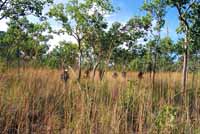 |
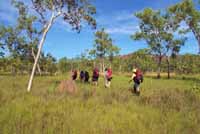 |
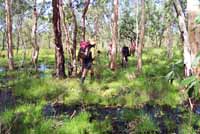 |
| The trip finished with a night at Cooinda and a Yellow Waters wetlands cruise. The photos below show the boat and a portion of the large paperbark swamp which the cruise can visit only during the wet season. |
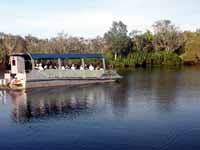 |
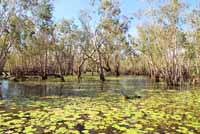 |
| The Yellow Waters cruises offer an excellent way to see birds and the large crocodiles which make swimming in the lowlands too dangerous to consider. There are no crocs like the one shown below in the areas we walk. |
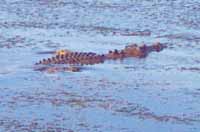 |
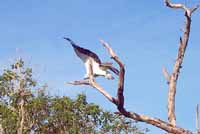 |
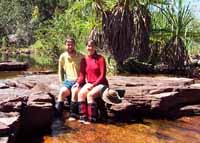 |
We'll leave this gallery with a final photo of David and Emily somewhere on the escarpment creek.
Many thanks to David for his trip report and to both David and Emily for the use of their photos.
|